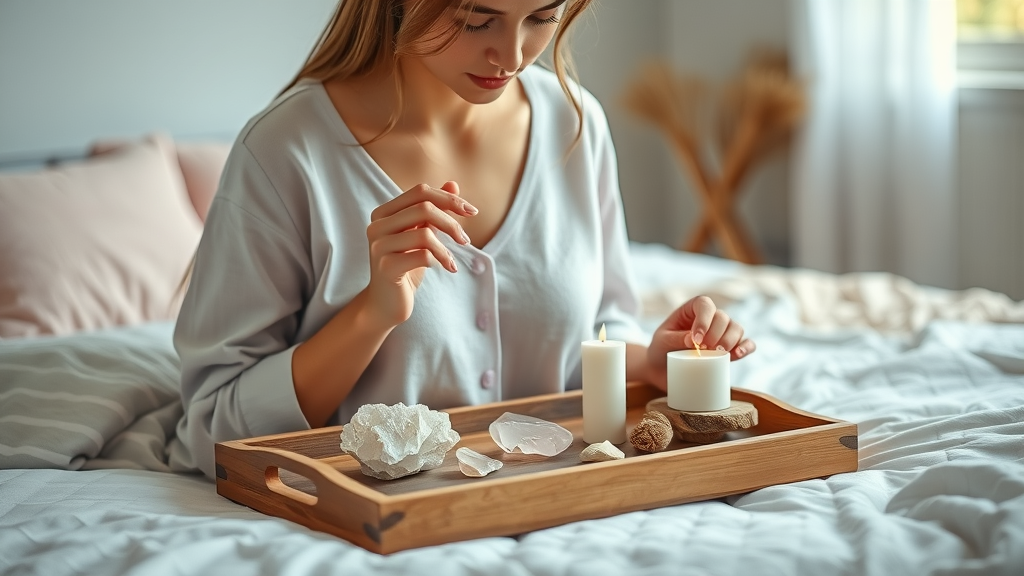Did you know that over 80% of women incorporate some form of ritual into their daily routine—even if they don’t call it that? Whether it’s a cherished morning coffee, a quiet journaling session, or a group fitness class, these everyday activities are more than habits—they’re rituals shaping our well-being and success. The power of rituals is not reserved for sacred spaces or ancient traditions; it lies at the very heart of modern womanhood, unlocking resilience, joy, and deeper meaning in the most ordinary moments. In this article, we’ll unveil how the art of ritual can truly transform everyday life, drawing on the wisdom of scholars like Casper ter Kuile and inspiring the magic that resides within each woman’s daily practices.
Unveiling the Power of Rituals: An Eye-Opening Look at Everyday Activities
For many women, the hustle of daily life often feels relentless—yet within this whirlwind lies an untapped wellspring of power. Embracing the power of rituals doesn’t always mean attending elaborate ceremonies or following religious protocols. Instead, it’s about finding significance in the everyday activities that structure our lives. Think of the purposeful way you savor your first cup of tea in the quiet morning, the mindful movement of rolling out your yoga mat, or the meditative repetition of cooking dinner for loved ones. Research suggests that these everyday rituals act as anchors, helping women manage stress, stay grounded, and reinforce their sense of control.
It’s not just about the big moments—it’s how ordinary practices become soulful when infused with intention. Across cultures and throughout history, rituals have acted as powerful tools for marking transitions, celebrating milestones, and fostering community. In the midst of a paradigm shift where traditional structures are evolving, modern women are reclaiming ritual as a personal and empowering resource. Whether you’re building a morning routine, participating in soulful practices, or simply seeking connection, understanding the power of ritual is the key to unlocking wellness and meaning in everyday activities.
"Rituals help us mark what’s meaningful – in the mundane and the magical."

Startling Statistics: How Many Women Rely on Rituals Daily?
Statistics show that up to 75% of women intentionally engage in routines or rituals to manage stress and cultivate well-being—often without consciously labeling them as such. According to recent research, simple acts like a nightly skincare routine or a shared weekly meal can significantly reduce feelings of social isolation and boost emotional health. Experts at Harvard Divinity School, including Casper ter Kuile, highlight that rituals—even secular practices—can foster belonging and personal growth.
In one study, women who maintained consistent rituals reported up to 40% higher satisfaction in their day-to-day life compared with those who didn’t. Clearly, these everyday activities aren’t just routine; they are transformative acts that shape life from the inside out. As modern women seek connection in an increasingly digital world, these practices provide not only a sense of structure but also a sanctuary for the soul, showing just how vital the power of ritual is in enhancing lives today.
What You’ll Learn About the Power of Rituals
- How rituals foster wellness and resilience in women
- The psychological secrets behind the power of ritual
- Transforming everyday activities into soulful practices
- Lessons from Casper ter Kuile and Potter and the Sacred Text
- How to create your own empowering everyday ritual

Defining the Power of Rituals: From Sacred Texts to Everyday Ritual
What Are Rituals?
Rituals are meaningful actions or sequences performed with intention. Traditionally, they are linked to religious or cultural practices—think sacred text readings or communal rites. But in modern life, rituals have expanded far beyond their spiritual origins. Today, anything from a solitary cup of tea to a group fitness session or soul cycle ride can become a ritual if approached mindfully and repeatedly.
These actions, when performed regularly, create a sense of rhythm and predictability, offering comfort and empowerment amid life’s chaos. For women, especially, rituals serve as everyday touchstones—reminders to pause, reflect, and reconnect with core values. By infusing the ordinary with intention, what was once a simple action transforms into a soulful practice, helping women navigate the pressures of modern living with resilience and grace.

From Sacred Text to Everyday Activities: Bridging the Gap
The leap from traditional sacred text rituals to modern-day soulful practices is less daunting than it appears. Historically, religious rituals provided both structure and meaning—but as society evolves, women are rediscovering the power of rituals in the ordinary. Whether it’s turning on calming music while cooking, lighting a candle for a moment of gratitude, or creating an anchoring morning routine, each act bridges the old with the new.
Authors like Casper ter Kuile invite us to see the magic in what we do daily, urging us to create our own forms of ritual lives outside conventional religious frameworks. This paradigm shift is particularly powerful for women who may crave spiritual connection but feel unsatisfied by traditional rituals. By claiming ritual as a personal tool, we unlock new ways to nurture ourselves, turning everyday activities into soulful practices that heal, empower, and connect us to something greater than ourselves.
The Power of Ritual: Insights from Casper ter Kuile and Soulful Practices
Casper ter Kuile: Redefining Rituals for Modern Women
Casper ter Kuile, a renowned scholar from Harvard Divinity School and author of The Power of Ritual, is at the forefront of this modern movement. His work, along with collaborations such as Potter and the Sacred Text, reframes the role of ritual from religious dogma to a source of daily inspiration and connectivity. Ter Kuile invites women to embrace rituals rooted in everyday experiences, rather than reserve them strictly for religious or extraordinary events.
Through his research, ter Kuile demonstrates how ordinary practices—a morning walk, a family meal, or even reading Harry Potter aloud—can take on a spiritual dimension when performed with care and mindfulness. His insights offer women permission to create rituals that honor their unique rhythms and needs, guiding them toward empowered, soulful lives. This approach not only strengthens personal wellness, but also forges the bonds of community in new and authentic ways.

Potter and the Sacred: Lessons from Harry Potter
One of ter Kuile’s best-known projects, Potter and the Sacred Text, explores the spiritual resonance of beloved literary series like Harry Potter. This initiative showcases how communal reading, shared reflection, and intentional discussion around these texts can become transformative rituals. Rather than simply consume stories, participants are encouraged to slow down, reread passages, and seek deeper meaning.
For women, engaging with literature as a ritual serves as a reminder of how the sacred is often found in the most unexpected places—like the comfort of a favorite book or the camaraderie of a reading group. By elevating everyday activities into soulful practices, women access both self-discovery and collective empowerment, echoing the magic found in both the texts and their own lives.
Turning Everyday Activities into Soulful Practices
- Morning routines as wellness rituals: Infusing your first waking moments with gratitude, mindfulness, or intention sets a powerful tone for the day.
- Cooking and eating mindfully: Preparing and savoring meals can become meditative, grounding you in the present and nourishing both body and soul.
- Movement and exercise for soulful connection: Yoga, dance, or walking can transform from mere workouts into celebrations of what your body can do, strengthening the mind-body connection.
- Journaling and reflection as daily power rituals: Putting pen to paper allows for self-expression and clarity, capturing life’s magic and challenges alike.

Why Women Need Rituals for Wellness: Benefits for Mind, Body, and Soul
| Type of Ritual | Main Benefit |
|---|---|
| Meditation | Reduced stress, improved focus |
| Gratitude practice | Enhanced positivity and perspective |
| Physical routines | Bodily health, energy boost |
| Creative rituals | Expression, self-discovery |
Science demonstrates that meaningful rituals provide stability and resilience, especially for women balancing multiple roles. Whether it’s meditation for stress relief, gratitude practices for a stronger outlook, or creative activities for self-expression, each ritual boosts well-being. Engaging in soulful practices allows women to combat social isolation, foster clarity, and create milestones in the journey of everyday life.

The Science Behind the Power of Ritual: Rituals and Women's Wellness
Psychological Effects of Rituals
Research suggests that rituals act as a psychological anchor, reducing anxiety and increasing perceived control—even in uncertain times. For women, consistently engaging in power rituals builds emotional resilience and a stronger sense of self. Rituals help reduce stress hormones, regulate mood, and establish healthy boundaries in daily life. This is especially powerful in the midst of a paradigm shift toward recognizing the importance of mental health in women’s overall wellness strategy.
Moreover, these practices foster a deeper mind-body connection, enabling women to move through their day with calm determination. Lighting a candle before meditation, for example, signals the start of personal sacred time, transforming a simple activity into a soulful ritual. The science is clear: when women intentionally form rituals, they experience lasting psychological and physiological benefits.

How Rituals Lead to Lasting Success in Women
The cumulative impact of daily rituals equips women for greater success. Setting time to reflect, move, or even pause for a cup of tea allows for the cultivation of clarity and creativity. Women who engage in steady, intentional rituals report higher levels of achievement and satisfaction across personal and professional domains. This is no coincidence. Rituals carve out space for self-empowerment, helping women assert control and prioritize well-being—key ingredients for lasting success.
From the insights of Harvard Divinity School’s Casper ter Kuile to the testimony of women everywhere, the message is clear: lasting transformation requires small, consistent soulful practices. Rituals don’t have to be grand or time-consuming; their true power lies in their ability to make every woman’s day life more meaningful and grounded, setting the stage for holistic achievement and joy.
The Four Types of Rituals Every Woman Needs
- Celebratory Rituals: Mark milestones and joys, from birthdays to personal achievements.
- Transformative Rituals: Embrace change—whether starting a new job or letting go of old habits.
- Healing Rituals: Restore balance and provide self-care in challenging times.
- Anchoring Rituals: Offer daily grounding, such as morning meditations or evening reflections.

Women’s Perspectives: Quotes on the Power of Ritual
"Each morning ritual is a promise to myself to prioritize my own wellness."
"Rituals are how I turn self-care into sacred time."
How to Create Your Own Everyday Ritual for Success
- Identify your needs and intentions
- Choose actions that feel meaningful
- Set a regular time and space
- Reflect and adjust your ritual practices

Case Study: Transforming Everyday Activities into Soulful Practices
Real Women, Real Results: Stories of Ritual Empowerment
Consider Maria, a busy mother of two who found herself drained and overwhelmed. By instituting a nightly journaling ritual and sharing gratitude practice with her children, she not only carved out time for herself but also deepened her family’s emotional bonds. Similarly, Jasmine, a professional juggling remote work and caregiving, transformed her morning cup of tea into a mindful meditation break, noticing increased clarity and reduced anxiety.
These real-life stories echo the finding that the power of rituals stems from their ability to foster meaningful connection—with oneself and others. As these women demonstrate, rituals need not be complex or spiritual to deliver transformative results; all that’s required is intention, consistency, and openness to daily magic.

Activities Into Soulful Practices: Examples for Inspiration
Turning everyday activities into soulful practices can be as simple as starting each meal with a moment of gratitude, lighting a candle to signal transition from work to rest, or taking a mindful walk at sunset. Women who prioritize these rituals report feeling more grounded and empowered, their days enriched by touchpoints of meaning. Inspiration abounds in community circles—virtual book clubs, wellness workshops, or even kitchen table conversations can spark rituals that nurture and uplift every area of life.
Frequently Asked Questions on the Power of Ritual in Women's Lives
What does God say about rituals?
Many spiritual traditions endorse rituals for connection and meaning; in Christianity and other faiths, rituals can act as a conduit for divine presence and reflection, emphasizing love, intention, and compassion over mere repetition.
What are the 4 types of rituals?
The four main types are: Celebratory rituals (marking milestones), Transformative rituals (for change and growth), Healing rituals (restoration and self-care), and Anchoring rituals (grounding and centering).
What are the benefits of rituals?
Rituals reduce stress, enhance clarity, foster community, and empower women to turn daily activities into sources of empowerment and meaning.
What is The Power of Ritual book about?
Authored by Casper ter Kuile, The Power of Ritual explores how modern rituals can transform everyday life, foster connection, and help individuals find spirituality without traditional religious frameworks.
Key Takeaways: How Rituals Unlock the Hidden Magic in Women’s Lives
- Rituals provide a foundation for wellness and self-empowerment.
- Everyday activities can be transformed into soulful practices.
- Casper ter Kuile’s insights inspire new perspectives on the power of ritual.
- Women’s lives are enhanced when sacred time is woven into the daily routine.
Conclusion: Embracing the Power of Rituals for Lasting Wellness
By making time for ritual, women claim their days as their own.
"By making time for ritual, women claim their days as their own."
Subscribe for More Strategies to Be a Successful Woman in Every Area of Your Life
Discover more ways to weave soulful practices into your routine—subscribe for strategies on being a successful woman in every area of your life.
FAQs on the Power of Rituals for Women
- How do I start a daily ritual? Begin by identifying what feels meaningful or nurturing, and set aside a specific time each day to engage with that activity. Over time, repetition will help it evolve into a grounding ritual.
- Are rituals only for spiritual practice? No, rituals can be secular or spiritual. Any action done intentionally and consistently with meaning can become a ritual—be it journaling, exercising, or sipping tea.
- What if I miss a day in my ritual practice? Missing a day is normal and doesn’t diminish the value of your ritual. Simply pick up where you left off, giving yourself grace and flexibility as you nurture your ritual life.
- Can rituals help with stress management for women? Absolutely. Rituals such as meditation, mindful movement, and gratitude practices have been shown to reduce stress, boost resilience, and foster overall wellness.
 Add Row
Add Row  Add
Add 




Write A Comment